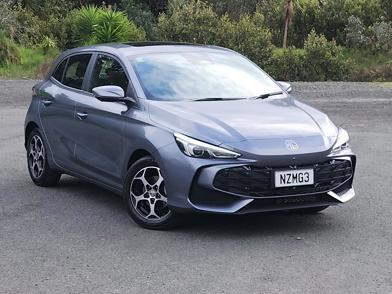Lexus New Zealand already enjoys a very high share of electrified vehicles in its overall sales mix: 72 per cent last year. But when it comes to the second-generation NX, it'll be 100 per cent.
The new NX comes only with hybrid technology: petrol-electrified 350h models with front-drive (entry model) or all-wheel drive (Limited), plus a new 450h+ with plug-in hybrid electric vehicle (PHEV) technology, in F Sport specification. The 450h+ is Lexus NZ’s first PHEV and boasts an impressive EV range of 87km from its 18kWh plug-in battery.
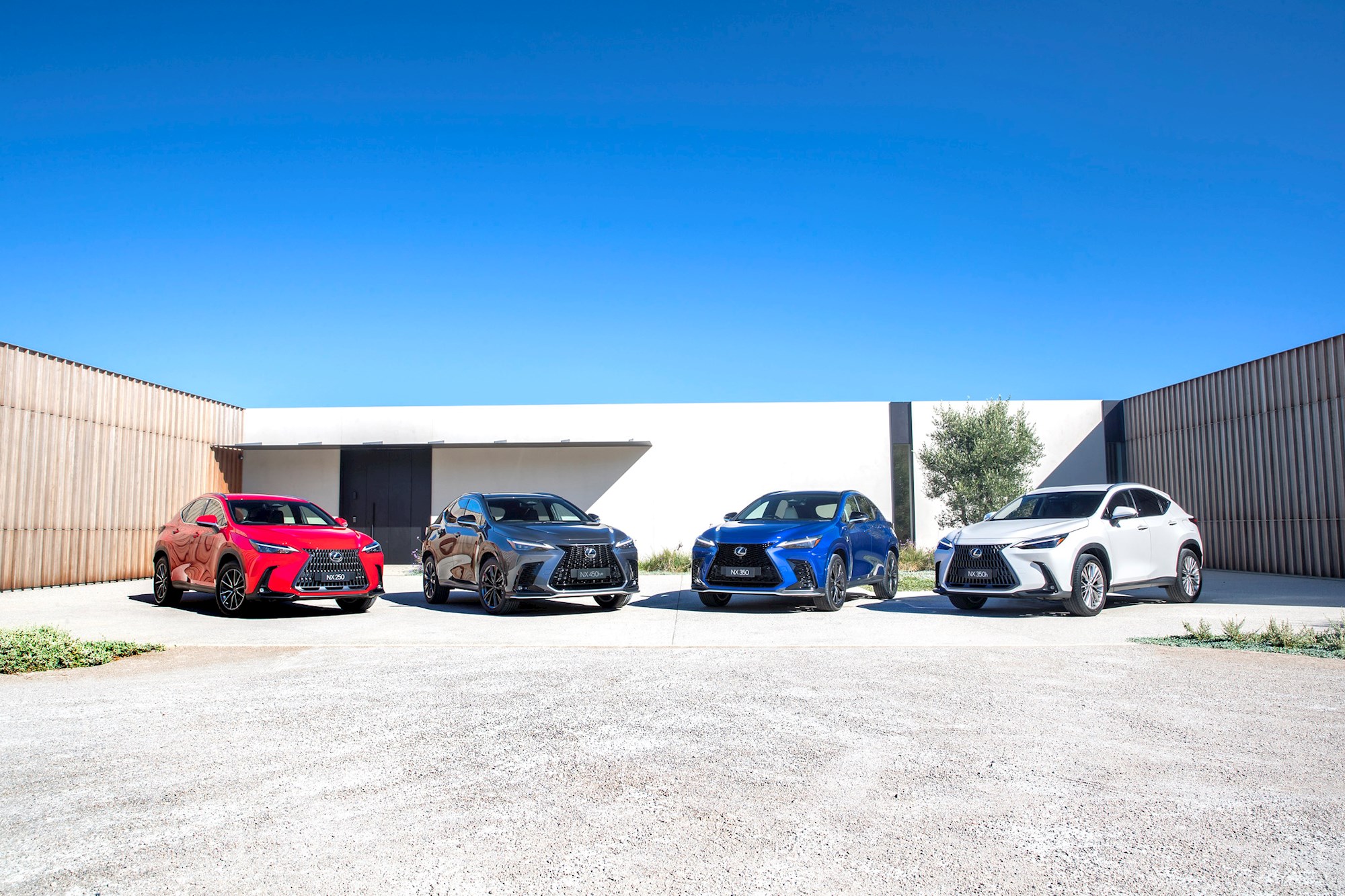
The 450h+ makes 227kW overall (including 134kW/270Nm front and 40kW/121Nm rear electric motors) and can hit 100km/h in 6.3 seconds; pure-electric driving is available at up to 100km/h.
Even the non-plug-in ("self charging" in Lexus speak, ha ha) 350h has 23 per cent more power (total system) and 14 per cent more torque (petrol engine only) than the previous 300h. But overall fuel consumption has still dropped by 12 per cent (although all NX models do require 95-octane fuel).
The NX is 95 per cent new and comes with a new design ethos – especially in the cabin, which Lexus says is now designed around “Tazuma” principles, symbolised by the connection between rider and horse. With apologies to Mazda perhaps?
View all Lexus NX hybrid models listed on DRIVEN
Anyway, the dreaded Lexus Remote Touch Controller has been dropped, in favour of more contemporary touch screen technology and a massive 14-inch display in the centre console. Touch controls on the steering wheels are also linked to the head-up display in Limited and F Sport models.
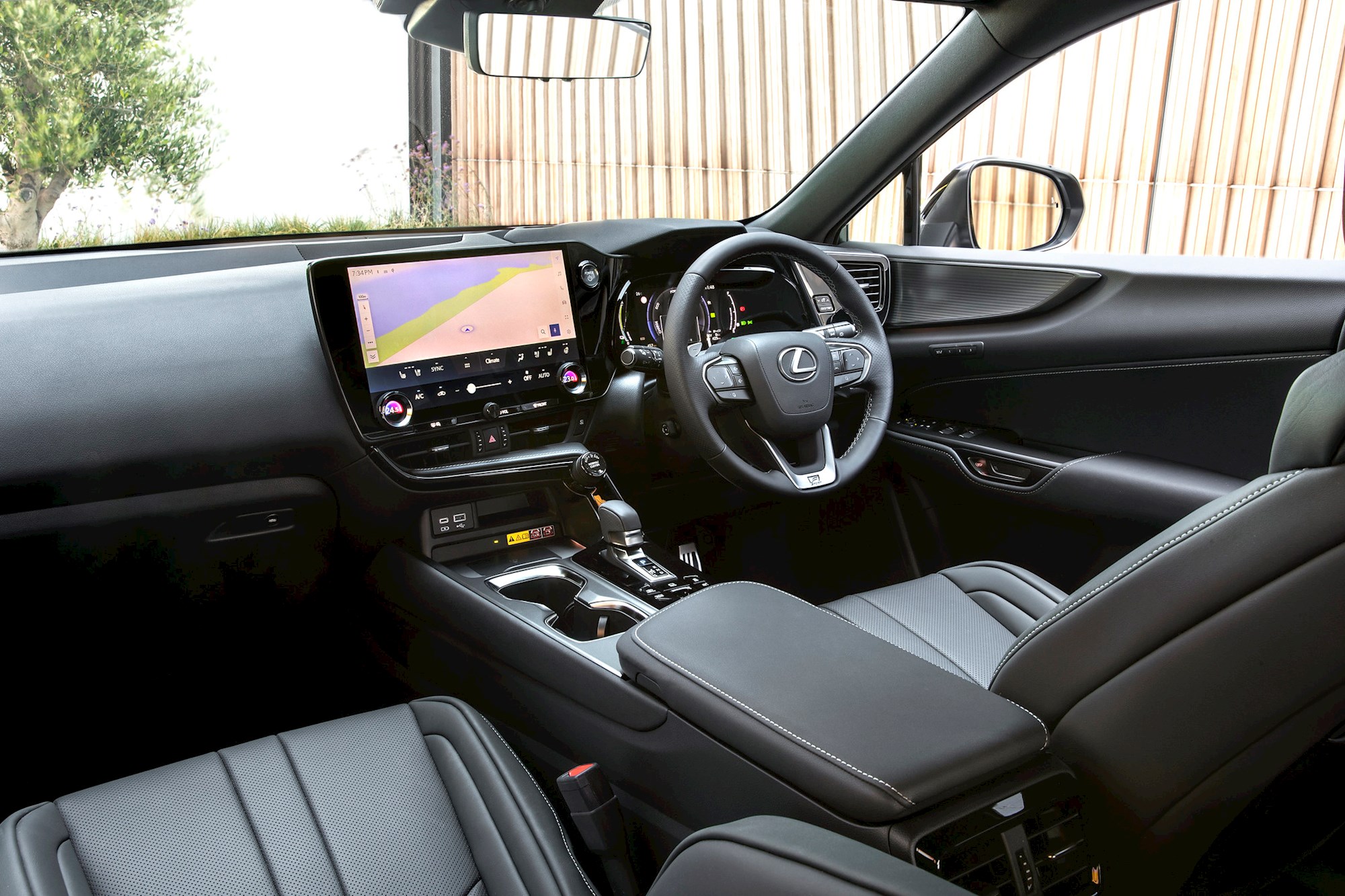
The number of physical switches in the cabin has been reduced from 78 to 45, grouped in different zones. That new multimedia system includes permanent shortcuts to navigation, media, phone and vehicle settings –as well as a “Hey Lexus” voice recognition feature (although it stops short of being a live assistant).
Our on-road introduction to the NX has been a brief drive in the 450h+ F Sport. Lexus coined the phrase “performance hybrid” two decades ago, but this model finally seems to deliver on the promise.
It really does deliver a double whammy. Don’t expect a huge dollop of character from the 2.5-litre four-cylinder engine, but this is a genuinely quick SUV in the real word. In hybrid mode the powertrain works seamlessly – as you’d expect, given the amount of experience Lexus has with this stuff.
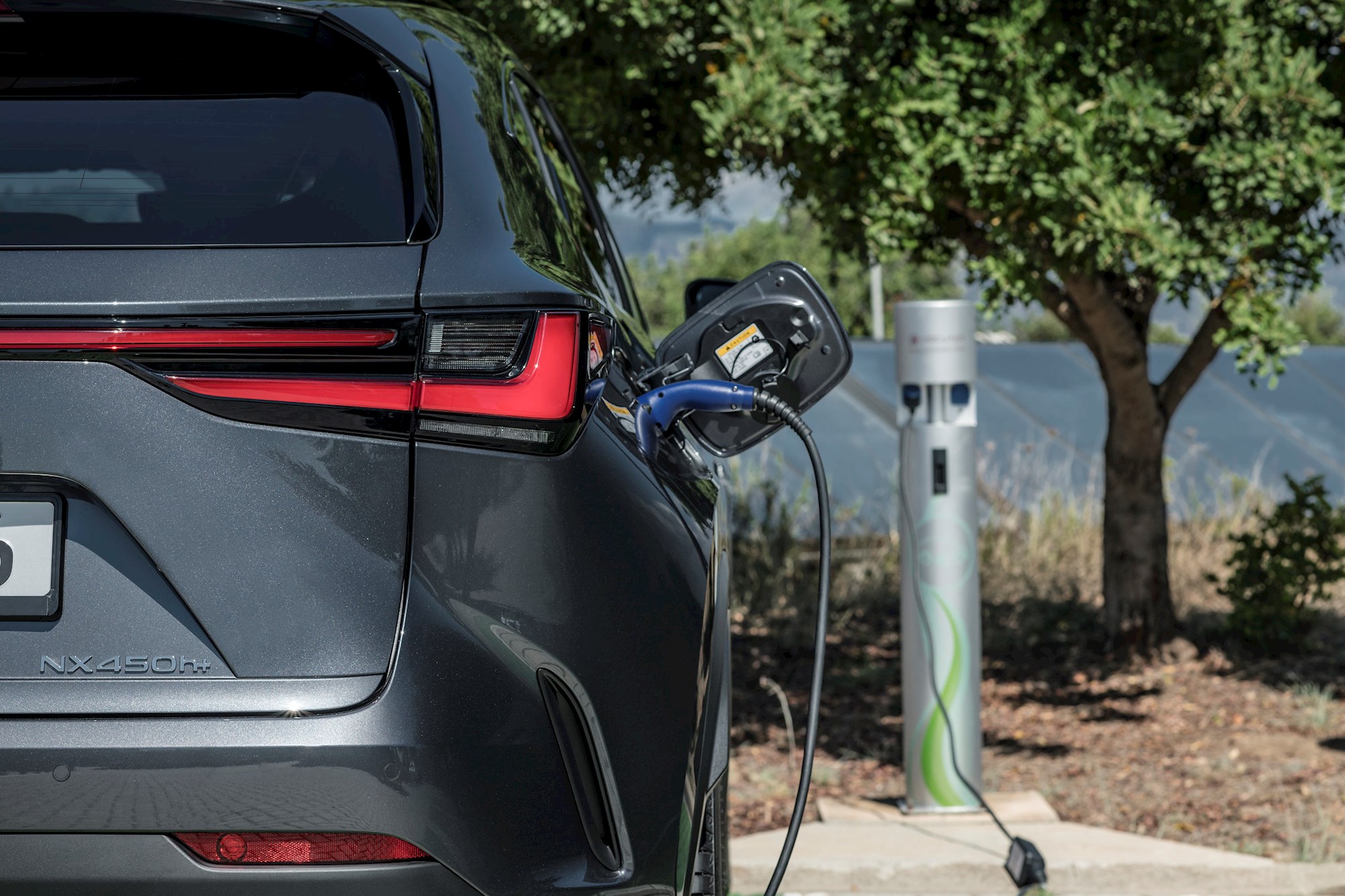
But the plug-in battery also delivers effortless zero-emissions commuting potential. PHEVs often fall a bit short in terms of range, but the NX is one of a new generation with larger batteries and genuinely useful EV-ability. You don’t even necessarily have to plug it in overnight (although you really should), our car easily delivering 70km-plus in urban commuting before it needed a recharge.
In EV mode it’s truly electric, too; put your foot down and it’ll stay in the EV setting rather than defaulting to full-power hybrid mode, at least as long as there is sufficient charge in the battery.
It’s deeply impressive, albeit costly addition to the PHEV shopping list: $107,900 for the range-topping NX 450h+ F Sport.
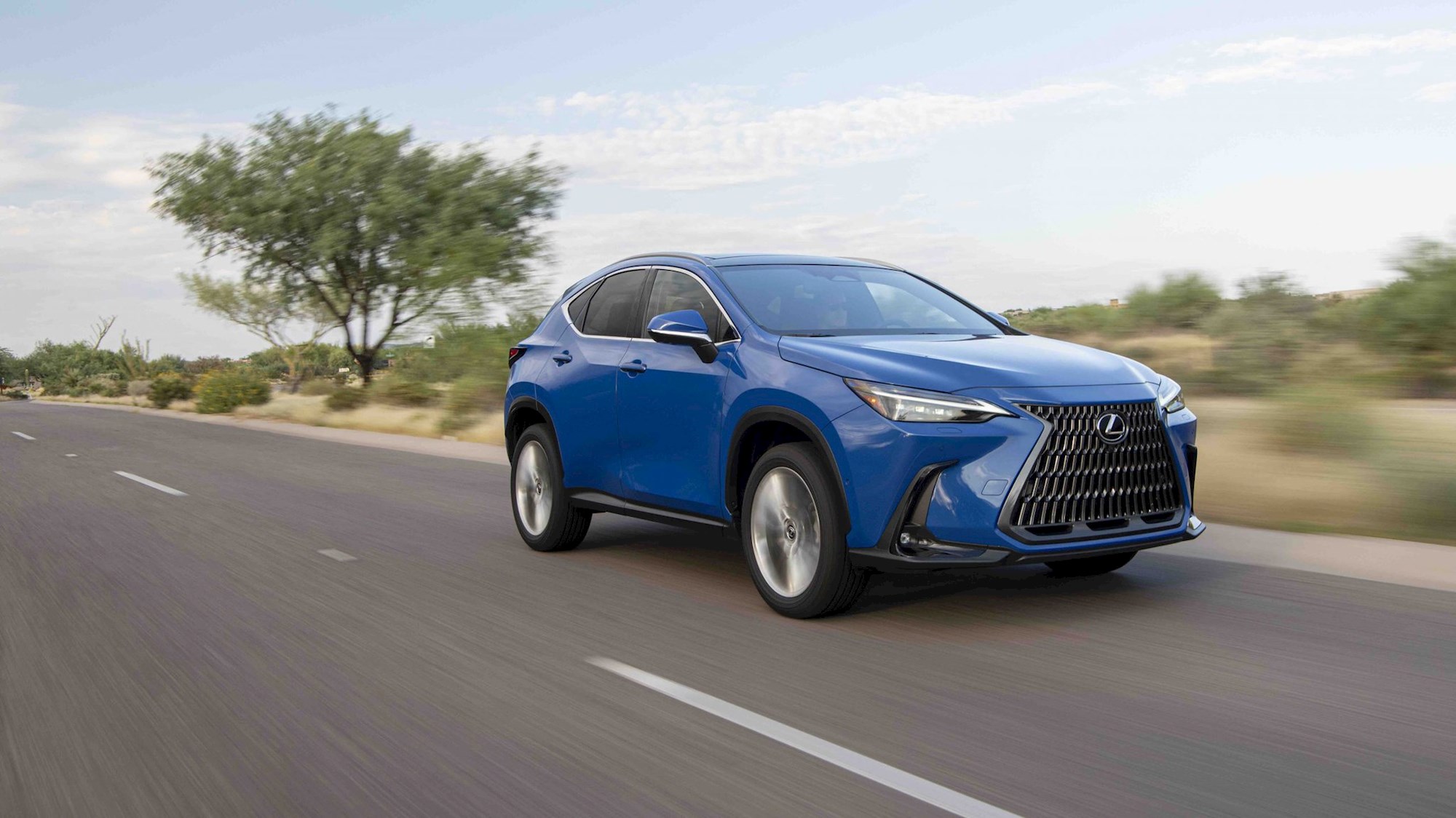
With prices starting at $93k there are no Clean Car rebates on offer for the rest of the NX range either, but certainly no fines either. Hybrid technology means even the thirstiest (ha ha) NX returns 5.5l/100km under the Government’s 3P-WLTP regime (126g/km).
In fact, Lexus NZ as a whole achieves a remarkable corporate average of 140g/km (the threshold for a “clean” car under the feebate scheme is 146g/km) – on its way towards 86g/km across the range by 2024.
As Lexus NZ’s second bigger-seller, the NX will have a huge part to play in the brand’s growth plan. The brand cracked 1000 sales for the first time last year (just, at 1005) and wants to double that figure by 2024; by that time Lexus will be 95 per cent electrified, so the NX really is the shape of things to come.
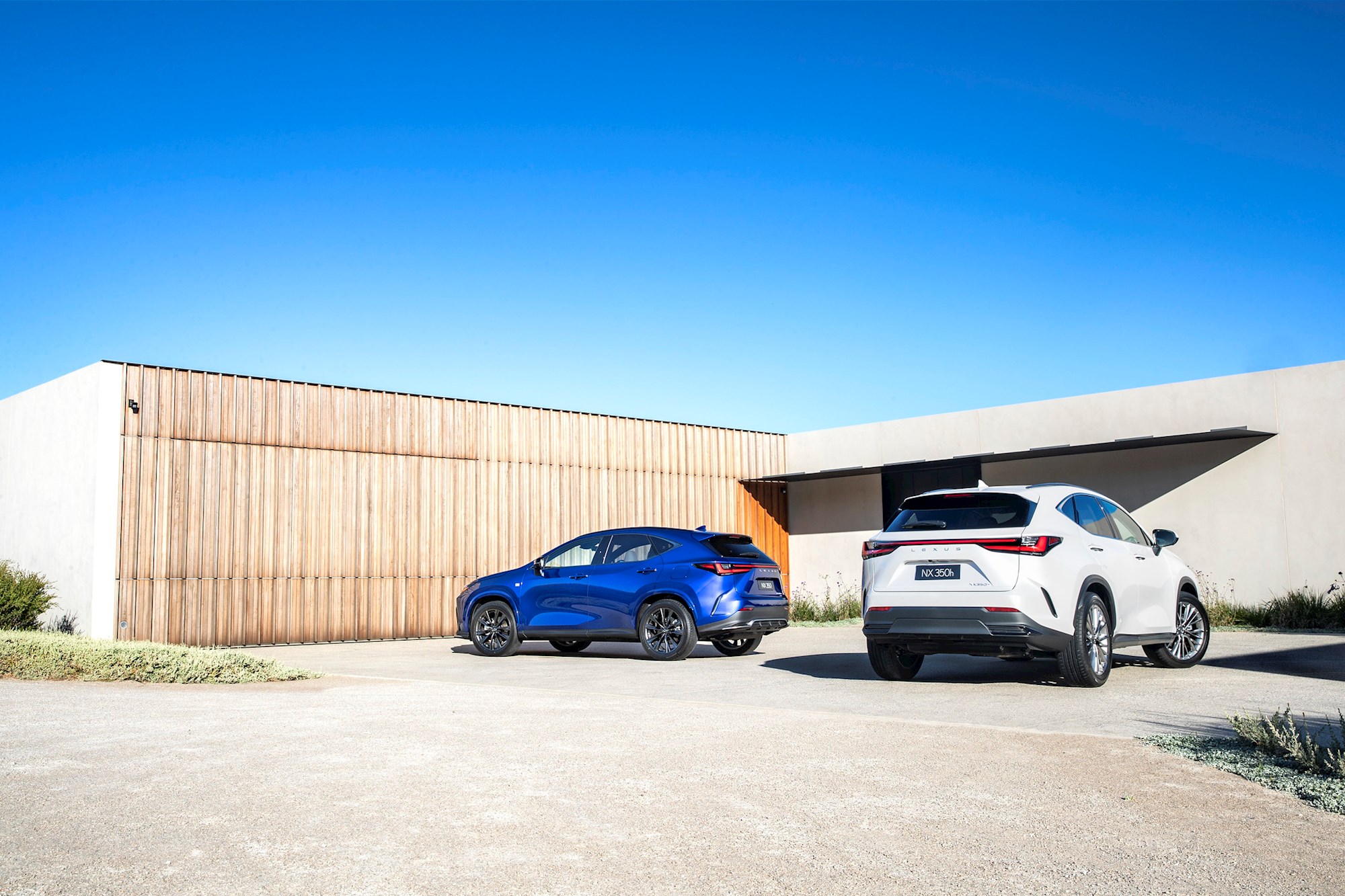
NX sales specifically have trickled along at approximately 200 per year since the first-generation model was launched in 2016. However, Lexus NZ expects an immediate jump to 400 with the second-gen version. First orders are split 60 per cent 350h and 40 per cent for the flagship 450h+ PHEV.
The NX still uses petrol in all its forms, of course. While Lexus does have a battery electric vehicle in its lineup, the UX300e, we’re yet to see the first dedicated BEV from the company. That’ll come with the reveal of the larger RX-sized RZ450e on April 20.
LEXUS NX
ENGINES: 2.5-litre Atkinson cycle petrol four with hybrid system and 1.1kWh battery (350h) or plug-in 18.1kWh battery (450h+)
POWER: 179kW (combined)/239Nm or 227kW (combined)/227Nm
GEARBOX: Electronic continuously variable, FWD or AWD
CONSUMPTION: 5.5-1.4l/100km, CO2 126-31g/km (3P-WLTP)
PRICE RANGE: $92,700-$107,900



















